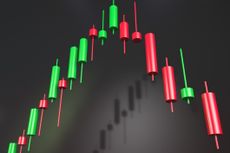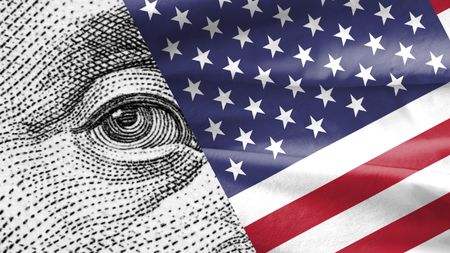Retailers Aim for a Head Start on Holidays
Stores’ most important season is bound to be better than last year’s. The question is by how much.
Notice how holiday promotions seem to come earlier every year? Candy for Halloween appeared on shelves in July, and Christmas decorations went on sale in September.
But this year, retailers have even more reason to push early sales. Many arranged earlier-than-usual shipment of year-end merchandise, hoping to hold down costs by avoiding peak season rates and fees. The National Retail Federation estimates that import cargo volume hit its peak in July, when it reached levels 25% higher than in July 2009. October is traditionally the peak, as retailers bring in merchandise in preparation for the holidays.
And with some discounting inevitable, stores hope the early displays will tempt customers to buy goods at full price rather than wait for bargains closer to the holidays. The longer products sit on shelves, the greater the odds that retailers will have to discount them to get them out the door. “Every Christmas tree they sell at full price now, the better” for profit margins, says Leon Nicholas, director of retail insights at Kantar Retail, a retail consultancy and analysis firm.

Sign up for Kiplinger’s Free E-Newsletters
Profit and prosper with the best of expert advice on investing, taxes, retirement, personal finance and more - straight to your e-mail.
Profit and prosper with the best of expert advice - straight to your e-mail.
Ultimately, holiday season sales will ring in about 3% greater than last year, a solid gain in comparison to 2009’s wan 1% increase. Retailers selling electronics will garner holiday traffic from gift givers focusing on gadgets from e-readers to smartphones, and upscale department stores will continue their resurgence, too, as higher income shoppers return.
In fact, a solid rise in retail sales in August suggests that consumers are thawing. They’re still spending cautiously and seeking out the best value for their money. But excluding autos and gas, 2010 retail sales are likely to rack up about a 4% gain, with all consumer spending -- which makes up roughly 70% of the economy -- rising a more modest 2%.
For retailers, managing inventory wisely will be crucial through the coming holiday season. In the weeks when retailers typically do from 25% to 40% of their annual business, they must have what consumers want, where and when they want it. So despite consumers’ continued caution about spending, retailers had to be careful not to order too little. Last year, when they slashed stocks in preparation for a sluggish holiday season, some retailers were left with nothing to sell in January. Gift cards have made that month a more important period than in times past. “Consumers have been trained to expect bargains and to use their gift cards” in the month following Christmas, says Alison Paul, vice chairman and U.S. retail leader at Deloitte Consulting. Merchants figure the combination of the longer selling season -- extended on both ends -- and pent-up consumer demand will justify slightly higher inventory levels.
Savvy retailers are also looking to strike the right balance on inventories by meshing their various shopping venues. Bricks-and-mortar salespeople will tap into their company’s Web site to order a sold-out size for a shopper or to check whether the item is available at a nearby location. The extra attention will help ensure the customer doesn’t go home empty-handed -- or worse, take her business somewhere else, says Paul. And it will allow retailers to meet unexpectedly high demand in one shopping outlet by easily shifting supply from another.
Even with all of that careful planning, though, how consumers will feel in a few months is still hard to gauge. “Bottom line is, we need jobs” to spur spending, says Marie Driscoll, director of consumer discretionary retail in equity research at Standard & Poor’s. Nicholas, meanwhile, estimates it’ll be at least mid-2011 before consumers’ spending truly picks up steam.
Get Kiplinger Today newsletter — free
Profit and prosper with the best of Kiplinger's advice on investing, taxes, retirement, personal finance and much more. Delivered daily. Enter your email in the box and click Sign Me Up.
-
 Stock Market Today: Stocks Are Mixed Before Liberation Day
Stock Market Today: Stocks Are Mixed Before Liberation DayMarkets look forward to what comes with the reordering of 80-year-old global trade relationships.
By David Dittman Published
-
 Stagflation: What It Is and Why Retirees Should Care
Stagflation: What It Is and Why Retirees Should CareStagflation — the economic bogeyman of the 1970's — may return to the US. Here's what it could mean to your retirement.
By Donna Fuscaldo Published
-
 Rising AI Demand Stokes Undersea Investments
Rising AI Demand Stokes Undersea InvestmentsThe Kiplinger Letter As demand soars for AI, there’s a need to transport huge amounts of data across oceans. Tech giants have big plans for new submarine cables, including the longest ever.
By John Miley Published
-
 What DOGE is Doing Now
What DOGE is Doing NowThe Kiplinger Letter As Musk's DOGE pursues its ambitious agenda, uncertainty and legal challenges are mounting — causing frustration for Trump.
By Matthew Housiaux Published
-
 A Move Away From Free Trade
A Move Away From Free TradeThe Letter President Trump says long-term gain will be worth short-term pain, but the pain could be significant this year.
By David Payne Published
-
 The Explosion of New AI Tools
The Explosion of New AI ToolsThe Kiplinger Letter Workers and consumers soon won’t be able to escape generative AI. Does that mean societal disruption and productivity gains are right around the corner?
By John Miley Published
-
 Trump’s Whirlwind Month of Crypto Moves
Trump’s Whirlwind Month of Crypto MovesThe Kiplinger Letter The Trump administration wants to strengthen U.S. leadership in the cryptocurrency industry by providing regulatory clarity.
By Rodrigo Sermeño Published
-
 Excitement Over AI Propels IT Spending
Excitement Over AI Propels IT SpendingThe Kiplinger Letter IT sales set to surge in 2025 as businesses rush to adopt generative AI.
By John Miley Published
-
 Donald Trump Tests His Limits
Donald Trump Tests His LimitsThe Kiplinger Letter President Encounters Legal Obstacles in Pursuit of Ambitious Agenda.
By Matthew Housiaux Published
-
 Another Down Year for Agriculture
Another Down Year for AgricultureThe Kiplinger Letter Farmers brace for falling incomes, widening trade deficits
By Matthew Housiaux Published